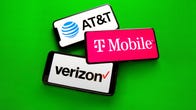Switching wireless providers isn’t easy. Although there are three major networks in the US, the actual number of wireless carriers and plans is significantly higher. Sifting through this big, confusing mess can be overwhelming, but we want to help make this process a little easier. Here’s how to choose a cell phone plan in 2023.
Which network works best for you?
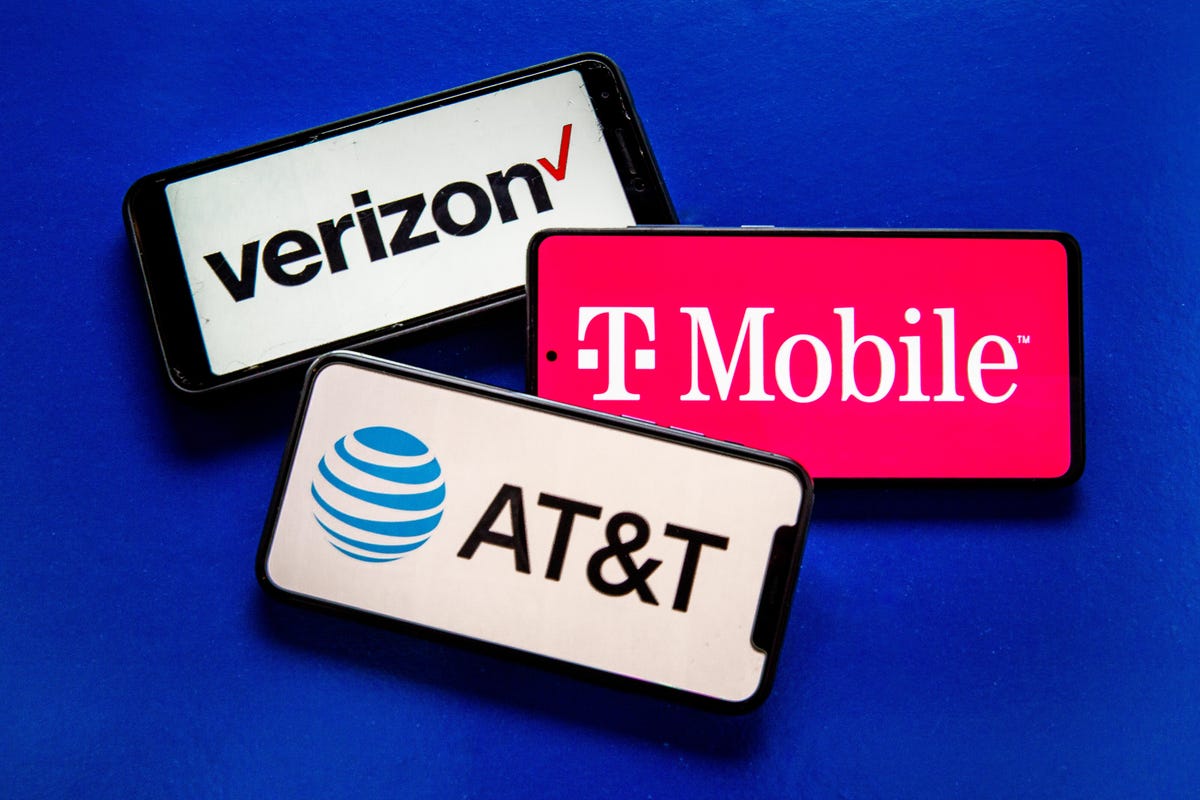

In the US there are three major networks: AT&T, T-Mobile and Verizon. All three offer services directly and have robust nationwide networks that offer 4G LTE (fast) and 5G (really fast) data.
The most important aspect of choosing a network is finding one that works in your area. This makes it hard for us to give a blanket recommendation of any one carrier. For example, T-Mobile’s service in New York may be excellent, but if you’re in rural Iowa, Verizon is more reliable.
While your mileage may vary, the good news is that these networks are growing and improving all the time, particularly as the three major players continue to try and blanket the US with 5G. It’s quite possible that a decade ago you left a network complaining about its sparse service, but now it has beefed itself up because of that arms race to acquire customers.
If you know any friends or family in your area that already use the carrier you’re considering, ask about their experience. You could also go to a carrier’s store and see if they offer any free ways to try out the service before switching over, such as T-Mobile’s Network Pass which lets you sample T-Mobile’s service for free for three months. Verizon now offers a similar 30-day “trial” program while the Cricket prepaid service has rolled out its own trial offering that lets you try out parent AT&T’s network.
Then, of course, there are the plans themselves. Below is a comparison of some of the latest plans from AT&T, T-Mobile and Verizon. For this chart, we focused on each carrier’s cheapest plan, as well as their respective “middle” options that we think could make sense for most people.
It is worth noting that some plans, like T-Mobile’s Magenta and Verizon’s Play More, include streaming perks like Netflix or the Disney Bundle (Disney Plus, ESPN Plus and Hulu).
Verizon Play More and AT&T Unlimited Extra also don’t require you to have every line on the same plan, so if only one of your family plan’s lines needs extra hotspot data, you can drop the others down to cheaper options and save a little there (Verizon only needs one line on an account to be on Play More for you to be able to get its Disney perks).
If you’re looking for multiple lines on T-Mobile and its cheapest rate, you’re better off going with its regular Essentials plan. A promotion the carrier is doing has it available for $100 per month for four lines which is $20 per month cheaper than the Base Essentials option.
Wireless plans compared
| Total data | Cost for one line (with AutoPay) | 5G | High-speed hotspot | Cost for four lines (with AutoPay) | |
|---|---|---|---|---|---|
| T-Mobile Base Essentials | Unlimited | $45 | Yes | Yes (but at “3G speeds”) | $120 |
| AT&T Value Plus | Unlimited | $45 | Yes | No | N/A |
| Verizon Welcome Unlimited | Unlimited | $65 | Yes (5G Nationwide only) | No | $120 |
| T-Mobile Magenta | Unlimited | $70 | Yes | 5GB per line | $140 |
| AT&T Unlimited Extra | Unlimited | $75 | Yes | 15GB per line | $160 |
| Verizon Play More | Unlimited | $80 | Yes | 25GB per line | $180 |
Know the smaller and prepaid players
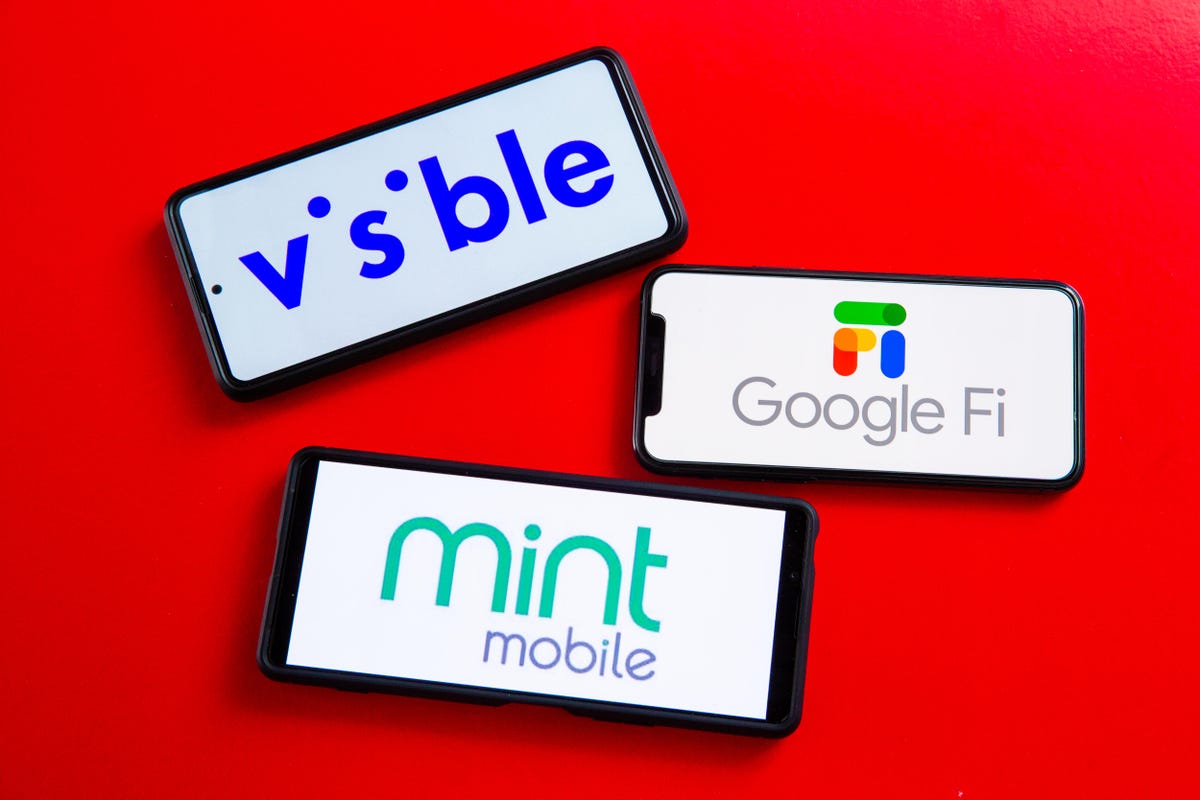

Visible, Google Fi and Mint Mobile are just a few of the many MVNOs that rely on larger networks.
Sarah Tew/CNETWhile AT&T, T-Mobile and Verizonoperate the major networks, there are a number of smaller wireless providers that offer service on their airwaves. First, there are the prepaid brands each carrier owns. Verizon has Visible, AT&T has Cricket and T-Mobile has Metro (and soon Mint Mobile). All use their parent’s respective networks for service.
Smaller players also rely on the larger networks for service. Mint Mobile and Google Fi, for example, use T-Mobile’s network, while cable companies Comcast and Spectrum rely on Verizon for their respective Xfinity Mobile and Spectrum Mobile brands.
Boost Mobile, which is owned by Dish, uses a combination of T-Mobile and AT&T while Dish builds out its own 5G network. Dish recently started offering its own service that rivals the big carriers, which it calls Boost Infinite. It’s still in beta before a full launch later this year.
The benefit of these smaller carriers — many of which are known as mobile virtual network operators, or MVNOs — is that you can get access to the larger provider’s service at a more affordable rate. If you found that Verizon works best where you live but its service is too pricey, switching to Visible, Spectrum Mobile or Xfinity Mobile could potentially allow you to keep similar coverage but pay a bit less (though you may lose out on some other perks like free streaming services).
We’ve broken down a few of these providers, including which provider uses which network and explained some of the trade-offs you’ll want to keep in mind.
Know how much you owe on your installment plan
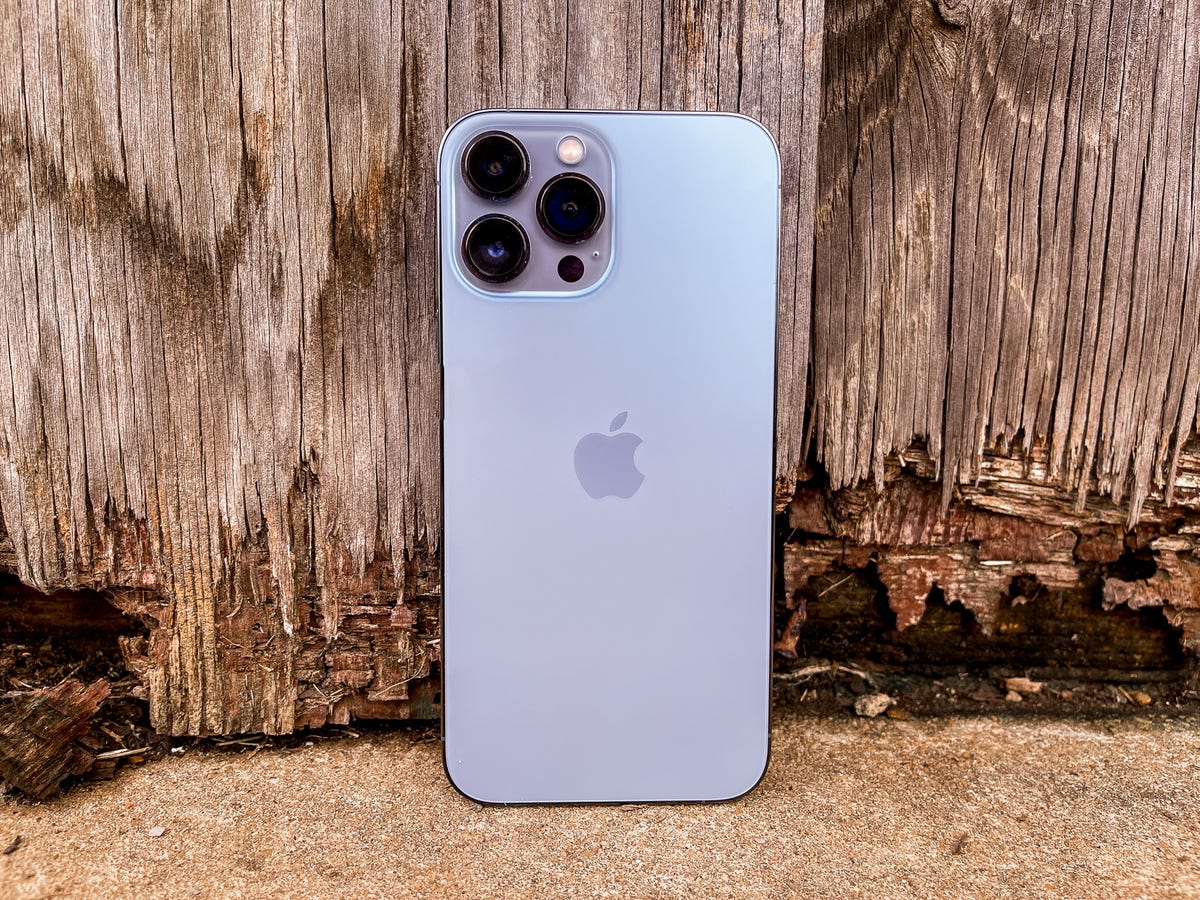

Getting a new iPhone at a deep discount from a carrier often requires a big commitment.
Patrick Holland/CNETTwo-year contracts have largely disappeared from the US wireless market. Unfortunately, they now seem set to be replaced by increasingly longer installment plans.
AT&T and Verizon now consistently only offer 36-month installment plans for the latest devices from Apple, Google and Samsung. T-Mobile still has options for 24 months but pricier devices, such as Samsung’s Galaxy Z Fold 4, require a 36-month plan should you want to finance them monthly.
With these longer timelines you can get a flagship phone for significantly less, but you need to stay on that carrier (and potentially with a pricier unlimited plan) for two or three years. If you leave before that time has passed, you risk needing to pay out the balance owed on the phone, which some providers require before they “unlock” the device to be used on other networks.
Major carriers often offer several hundred dollars when you switch, which can help subsidize the price of the change. But you’ll want to check your account online or go into your carrier’s store to find out how much you might still owe on your phone before you leave.
Decide if you should keep your current phone
The modernization of phones and networks means your existing phone will probably work just fine on a new carrier. All the major wireless carriers offer a similar assortment of the latest devices, particularly when it comes to the iPhone and the Galaxy lines.
To make the most of any switch you’ll probably want to take this opportunity to upgrade your device, particularly if it’s a few years old and lacks modern features like 5G. There are often extra deals when adding or opening a new line to help pay off any installment plan or get you to a better device.
If you’d rather keep what you have, your existing device will probably work just fine so long as it’s unlocked from your prior provider.
Know your discounts
Keep in mind that all of the carriers offer additional savings, which you could be eligible for depending on your employer, military status, student status or even age. If you’re on a family plan, a family member could qualify even if you don’t.
First responders, military members, veterans, nurses and teachers, in particular, can get discounts from every major carrier. Verizon offers discounts for students, while T-Mobile’s Work perk could knock $10 a month off a Magenta Max plan and AT&T offers a similar program for its Unlimited Premium and Elite plans that it calls Signature.
If you’re 55 or older, you may also be eligible for a discounted plan: T-Mobile offers discounted plans nationwide for as low as $55 a month for two lines, while Verizon and AT&T offer similar options but only for Florida residents.
We break down the discounts in greater detail here, for AT&T, Verizon and T-Mobile.
This could save you money if you switch, or potentially lower your current rate a bit and save you the hassle of changing providers.
Understand the perks
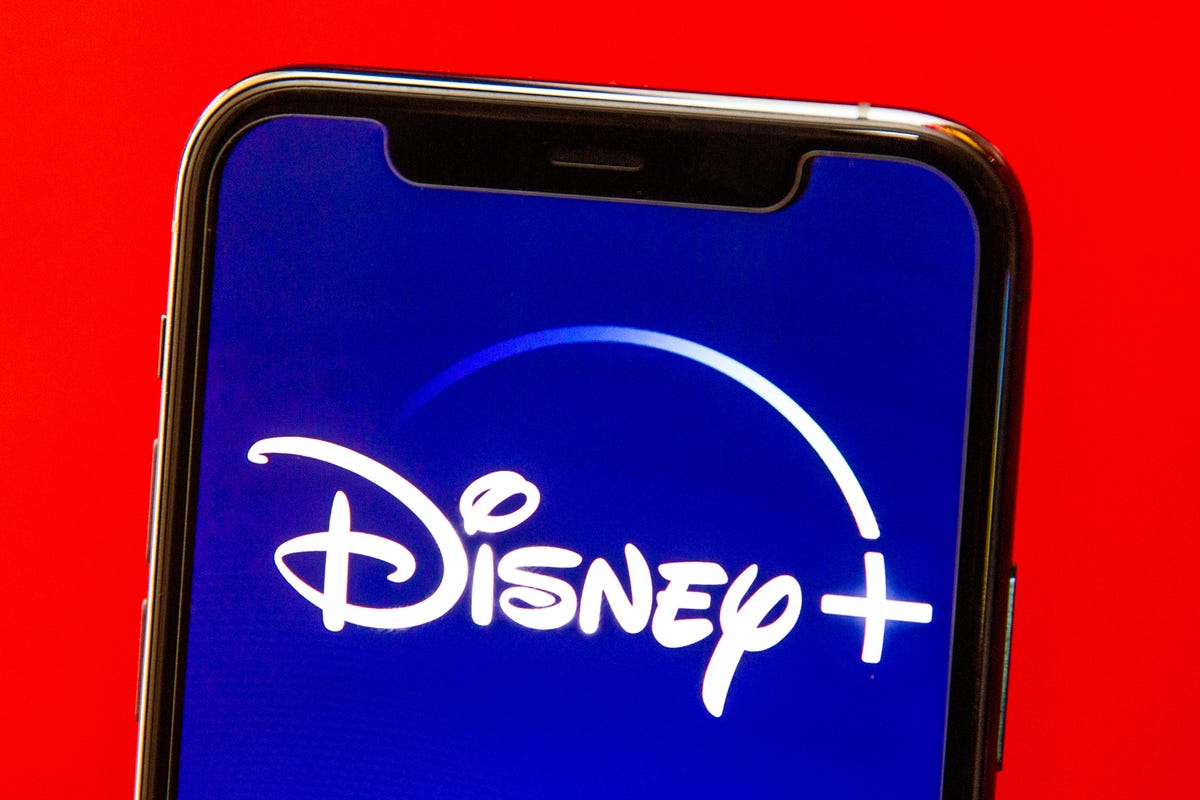

If you have the right Verizon plan you could get free Disney Plus.
Sarah Tew/CNETMany of the major carriers bundle in perks for using their higher-end unlimited plans, particularly streaming services. Verizon offers the Disney Bundle (Disney Plus, Hulu and ESPN Plus) to those with its Play More and Get More unlimited plans and T-Mobile offers versions of Netflix with its Magenta and Magenta Max offerings and also includes a subscription to Apple TV Plus with Magenta Max.
Even prepaid and smaller carriers like Cricket (HBO Max with Ads) and US Mobile (a variety of options) offer perks with their unlimited plans.
In addition, some Verizon plans (like the top Get More option) include Apple Music, while T-Mobile’s Magenta and Magenta Max also offer in-flight Wi-Fi and unlimited data abroad. T-Mobile’s Metro offers 100GB of Google One storage and AT&T gives six months of free gaming with an extended trial of Nvidia’s GeForce Ultimate.
If you’re already paying for one or more of these subscriptions, switching to the right provider could be a way to help you save even more.
We’ll continue to update this with more cell phone plan tips.

